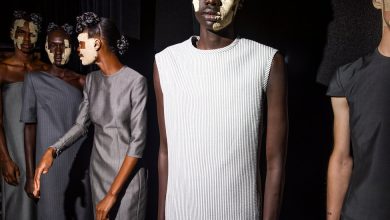What’s the Big Deal About a Woman Being Bald?

In all the talk of “the slap” that has gone on since the Oscars; in all the soul-searching prompted by that break from the norm, its aftermath and what it could mean not just for the Smiths or the Academy but for comedy, culture and gender writ large; in all the important medical discussions it engendered of alopecia, not to mention the complex role hair has played in Black history — there has been one constant underlying it all: the powerful symbolism of the bald female head.
Like all the politics that swirl around women’s bodies, the shaved head is both a magnet and a trigger. It inspires a complicated stew of prejudices, fears, stereotypes and sensitivities — whatever the reason for the baldness in the first place.
It was only four years ago that X González, the Marjory Stoneman Douglas High School student then known as Emma, last made shaving your head as a woman a national talking point as a face of #NeverAgain. How far we have not come since then. Hair, or the lack of it, is still a public issue.
That is in part because it is, literally, public. It is the most obvious expression of self, of gender, of subversion; of conformity, seduction, aggression, rebellion. It is immediately visible, impossible to ignore. And thus it is a key variable in shaping the perception of the external gaze, be it male or female.
If, as Malcolm Gladwell wrote in “Blink,” we all make snap judgments about one another all the time, then one of the first cues we use is hair. Mr. Gladwell said the thesis of his book was actually inspired by his decision to let his own hair grow out into a fuzzy corona — and the way that new do changed people’s reactions to him. (In his case, he thought, it led to racial profiling.)
“In the social media age, something like hair becomes a part of your brand,” said Tanisha C. Ford, a professor of history at the Graduate Center of the City University of New York and the author of the coming “Our Secret Society,” an examination of race, power and money. “The choices we make about how we adorn our body become part of who we are.”
As Representative Ayanna Pressley of Massachusetts said when she revealed on Twitter that she, like Jada Pinkett Smith, has alopecia and had decided to unveil her bald head: “My twists have become such a synonymous & a conflated part of not only my personal identity & how I show up in the world, but my political brand. And that’s why I think it’s important that I’m transparent about this new normal & living with alopecia.”
In a world where people are constantly making assumptions about one another based in part on their hair, each hairdo becomes a statement of self, read through the lens of associations, often subconscious, absorbed over time.
It’s especially true at the two extremes: the yin of long, lavish hair, the kind described in Western myth, the Bible, fairy tales; and the yang of the shaved head. It is embedded in the history of race, wealth and class. And, in the West, it is defined largely by what Professor Ford calls “patriarchal ideas of beauty and sexuality rendered through a very normative lens.”
Just think of — in no particular order — how Rapunzel was freed by her hair, and Goldilocks named for hers. How Lady Godiva used her hair to cover her nakedness. How hair was the source of Samson’s strength.
Consider the towering wigs of the court of Louis XIV and Marie Antoinette; the powdered wigs British barristers still wear. The billowing and blow-dried locks of the Trump women and Fox News (hair the anthropologist Grant McCracken called “voluptuous hair” in his book “Big Hair”).
To reject all that is not to avoid such associations but to become part of a host of other references and traditions.
The bare female head, for example, is often read as a statement of “radical politics and transgressing gender norms,” Professor Ford said. Not to mention “a refusal on the part of Black women to fit into European beauty ideals.” See the model Pat Evans, who became a sensation in the 1970s by shaving her head.
In this, it can be a sign of strength and power; a refusal to hide a face under a bushel of Farrah Fawcett flips or a hair-sprayed helmet; a riposte to old power structures and their antiquated ideas. So it was, anyway, in “Mad Max: Fury Road,” with the buzz cut of the rebel Furiosa, played by Charlize Theron. And in “Black Panther,” in which the shaved heads of the Dora Milaje, the army of female warriors who protect Wakanda, are a reflection of their fierce, fearless beauty.
While that may be, as Professor Ford noted, “a very affirming image, it is also set in a fantastical land of superheroes, and women walking down the streets of Atlanta or Chicago may have a very different experience.”
Indeed, shaving women’s heads has also been a form of punishment and mark of shame, from the guards shearing Joan of Arc’s pageboy before her execution to the women in France shorn after being accused of collaboration with the Nazi regime. And sometimes the bald head, in the context of chemotherapy, can be a signal of illness.
To wear it proudly in public is to force a confrontation with all of these prejudices and suppositions.
All of which is to say, while William Blake may have imagined seeing the world in a grain of sand, the world may in fact see itself more often in a strand of hair. Or in its absence. Maybe especially in its absence.





